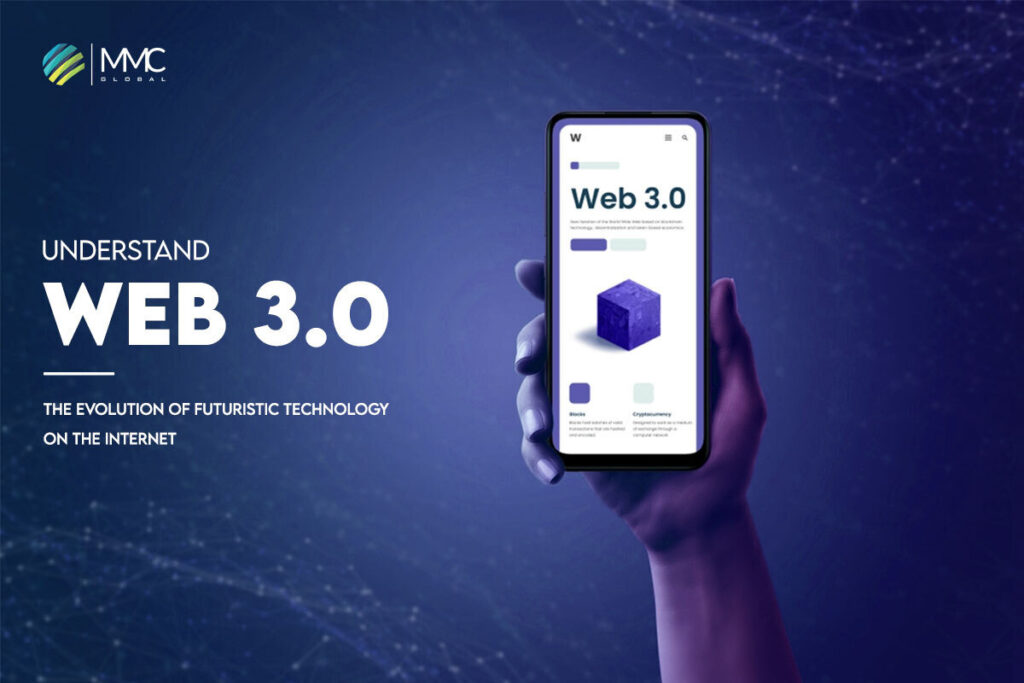
The third generation of the internet has evolved like a boom. It made the web user experience more personalized and secure than Web 1.0 and Web 2.0. Today, we are talking about how Web 3.0 changes an individual’s life and the important features of Web 3.0 that make it advanced.
9 Key Features Of Web 3.0
Blockchain and Cryptocurrency
The impact of Blockchain technology impacts Web 3.0. It will change how consumers interact with digital technology. The development of cryptocurrency is a part of Web 3.0 to compensate content creators. It would generate tokens each time a user viewed their work.
Due to their autonomy, connectivity, and interoperability, these three technologies will complement one another effectively. Smart contracts, which perform functions like transactions, censorship resistance, anonymized P2P data storage, and app sharing, are the foundation of the method. It would alter how an organization does business and empower artists and users.
IoT support and widespread connection
The interaction and connectivity with Web 3.0 are ubiquitous. Data and information will be more linked thanks to semantic content. The Internet of Things (IoT) represents the pinnacle of connectivity; consumers may access data from several apps anytime and place. Laptops, PCs, and smartphones are not the gadget that will connect to information transparency and the internet; instead, we’ll have access to increasingly sophisticated smart devices like the Internet of Things (IoT).
Artificial Intelligence, Machine Learning, NLP
You must hear that “AI is the future.” Now you can see how smoothly AI transform the user experience by making judgments and consumer behavior pattern. AI has developed to the point where it is capable of making predictions and judgments. It is proactive, pertinent, and beneficial. Artificial Intelligence AI empowers Web 3.0 features through its vast scope of algorithms and techniques.
Through speech, text, and other interfaces, the semantic web intends to make it possible for people and computers to work together. Another subfield of AI is Natural Processing Langauge (NLP), which helps generate content. In contrast to earlier applications like spell check and auto-complete, NLP uses sophisticated algorithms to enable computers to read, comprehend, and infer the meaning of words and sentences.
Decentralization via Blockchain
Web 3.0 is now more secure by eliminating intermediaries’ inclusion. Sharing and exchanging data without third-party involvement and permission would make operations fast. Like you don’t need to get permission from anyone to access data, it saves time and privacy.
Blockchain gives a decentralized infrastructure where each block can save data with a customized algorithm called a cryptographic hash. Web 3.0 applications and systems associated with decentralization that is why they are denoted as dApps.
Read More: How is Blockchain App Development Helping The Business Industry Grow in 2022?
Edge Computing
To decrease latency and bandwidth use, edge computing is a network category that locates processing as near as feasible to the data source. Less work is done in the cloud thanks to edge computing; instead, it is done locally on a user’s computer, an Internet of Things (IoT) device, or an edge server. It reduces the volume of lengthy transfers between a client and server when processing runs to the edge of the network.
Edge computing is currently a part of Web 2.0, which is changing the data center architecture of the largely commercialized personal computer. Conversely, Web 3.0 may move data centers to the edge, giving consumers back control.
3D Graphic
3D graphics are another feature that distinguishes Web 3.0 from Web 2.0. The development of a more fascinating and realistic virtual world is now possible with three-dimensional architecture, increasing economic viability.
A few industries, such as architecture, online gaming, real estate, e-commerce, and tourism, have already used 3D graphics. The purpose of using 3D graphics is to promote goods and services. According to a study, Web 3.0’s next evolution is known as the spatial web. It will blur the lines between the digital and real worlds. Companies and organizations are actively utilizing some of its technologies, such as virtual reality. It helps people visualize products and procedures. Web 3.0 may help to rethink visual technology and make it easier to interact with the metaverse and 3D virtual worlds.
Read More: Understand Web 3.0 – The Evolution Of Futuristic Technology On The Internet
Semantic Web Infrastructure
A key component of Web 3.0 is the “semantic web.” Tim Berners-Lee used the phrase to define a network of data that computers can analyze. Semantics is the study of how facts are interpreted or emotionally charged. Search and evaluation will help in developing, sharing, and linking content as well as understanding the meaning of words.
In Web 3.0, semantic metadata will encourage greater data transfer. As a result, the user experience improves to a higher level of connectivity that uses all accessible data. The semantic web will help train the computer to understand what the data actually means. It enables artificial intelligence to create practical applications that effectively exploit the data.
Associate With Metaverse
When discussing web 3.0 and the development of technology, the metaverse is frequently the first idea that springs to mind. The use of three-dimensional designs is common for businesses and websites. The following iteration of the internet can be smoothly incorporated into the virtual world. It allows the production of 3D websites and the embedding of IoT devices at their edges. For imaginative gaming applications in game development organizations and other sectors, 3D graphics lay a brand-new foundation of immersion.
Data Ownership
With Web 3.0, users may advertise their data through decentralized data networks while still retaining total ownership. Several high-powered computing devices will produce this data, including sensors, cell phones, laptops, home appliances, and automobiles.
With Web 3.0, information can be stored concurrently in several locations and become decentralized because its position is determined by its content rather than its physical location. Eliminating the enormous databases that internet goliaths like Google and Meta now keep will empower people.
Wrapping Up
Web 3.0 is the latest third generation of the internet that builds a secure, permissionless, and futuristic user experience. The inclusion of AI, ML, NLP, Blockchain, IoT, and other technologies made Web 3.0 whooping to improve data operations, increase reliability, democratize collaboration, transperency, and much more.

